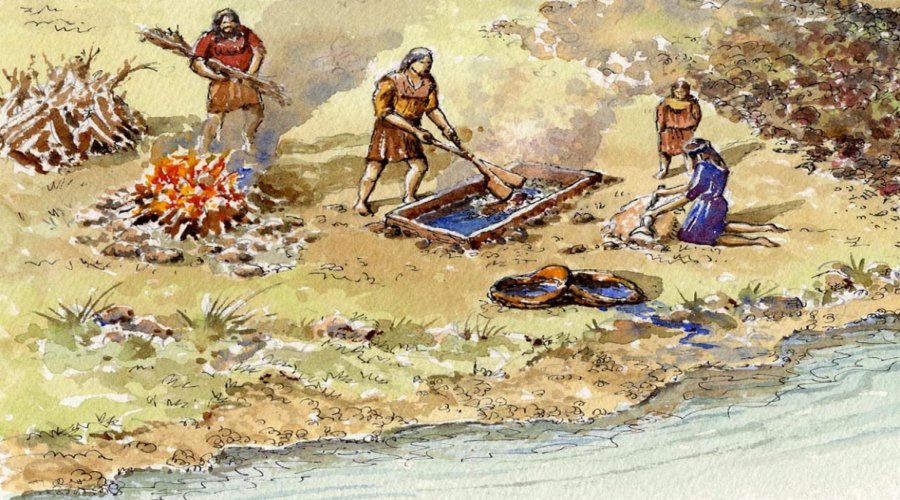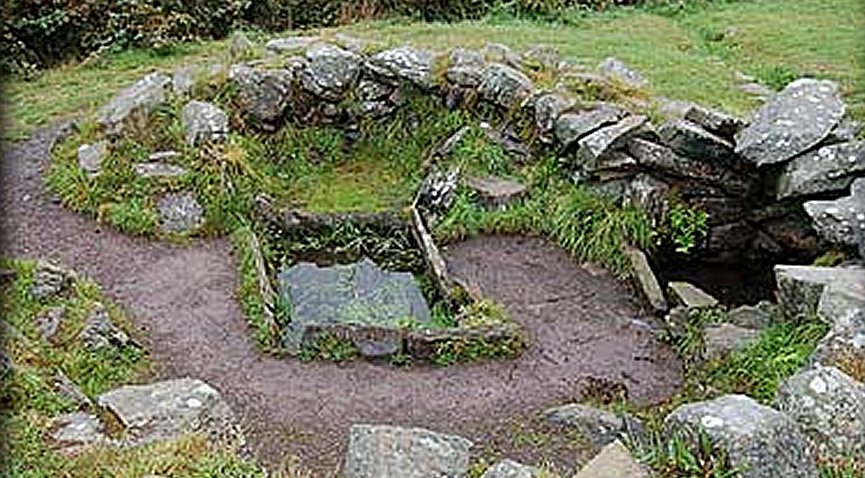MessageToEagle.com – ‘Burnt mounds’ also known as fulacht fiadh are thought to be cooking places of the legendary soldiers of the High Kings of Ireland. They were also used by ancient Celtic communities celebrating two great Celtic fire festivals, Samhain (‘Summer End’) and Beltane (the beginning of summer’).
This millennia old tradition of cooking pits survived from the Bronze Age (1800 BC) until the Elizabethan Era, from 1558 to 1603.

Such ‘kitchens’ were usually circular or crescent-shaped and their sizes varied from a few meters in diameter to more than thirty meters.
The term ‘fulacht fiadh’ is found in the early Irish literature from at least the 9th century AD and refers to open-air field kitchen in form of a water filled pit used to cook meat. In Gaelic, “fulacht” means “cavity,” and it can also refer to an outdoor cooking pit where meat was roasted on a spit or over an open fire.
Researchers believe that “Fiadh or Fia” which means “of the deer” or “of the wild”, may be derived from the early word “fian” – “of the Fianna (or Fionn Mac Cumhail).

Fionn MacCumhaill was a great mythical Irish warrior. His name has a number of different spellings and the name ‘Fionn’ (in Gaelic, ‘fair’) likely referring to lightly colored hair. Fionn was the son of Cumhaill, the leader of the legendary warriors of the high Kings of Ireland – Fianna, who lived apart from the rest of Gaelic society.
The location of ‘burnt mounds’ was usually close to a stream or lake, or any low-lying boggy ground. A rectangular pit, a meter wide by 2 meters long and maybe half a meter or more in depth, was dug where it would quickly fill with water. Then, it was clad on the four sides with wooden sections.
A fire was set near to the pit, upon which stones were heated and then dropped into the water. Subsequently, joint of beef, pork, lamb, chicken or other meat, was wrapped in straw (sugan – like the straw ropes) and put into the simmering water until cooked.
The boiling water obtained in this heating process was probably used for a variety of purposes.
See also:
‘Lios na Grainsi’ – Ireland’s Largest Stone Circle
World’s Oldest Moon Map Carved Into Ireland’s 5,000 Year-Old Tomb At Knowth
Brian Boru – Famous And Brave Irish Hero Who Dared To Chase Off The Vikings
Some recent tests have shown they could boil seventy gallons of water (265 liters) in about fifteen minutes! The ‘burnt mounds’ were also discovered in the neighboring United Kingdom, but most of them – approximately 6,000 recorded fulacht fiadh sites – are located in Ireland.
Several other theories have been proposed to explain the nature of the Irish ‘burnt mounds’. Covered by light structures, the sites could have been used as saunas or sweathouses, to brew beer or for textile production.
However, a lack of indispensable artifacts associated with any of the proposed activities at excavated fulacht fiadh sites, continues to shroud the purpose of these prehistoric structures.
Only in some of these sites, there were unearthed certain artifacts such as a gold ring, a dress-fastener, some amber bead fragments and tanged arrow heads. This could indicate that the ‘fullacht fiadh’ served not only domestic purposes but even ritual ones.
Copyright © MessageToEagle.com This material may not be published, broadcast, rewritten or redistributed in whole or part without the express written permission of MessageToEagle.com
Expand for references





